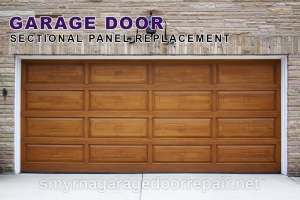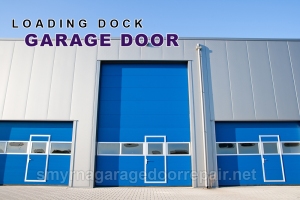A door closer helps to latch a door in a controlled manner, keeping it from slamming and making a lot of noise or loud sound. This is what happens when a door is closing. The equipment used for door closers have been around for years. In fact, some of these same parts are still being sold and installed in newer doors today, such as, hinges, weights and springs. A door closer can come in various applications, sizes, shapes and configurations. They can be installed inside the header above the door, mounted underneath the floor under the door or surface mounted on the face of the door. Each way has its own benefits and disadvantages. Consulting with a reputable and reliable garage door service, such as, Smyrna Garage Door Repair will enable you to find out more about the advantage and disadvantages. Note that many architects install concealed door closers for aesthetic purposes.
Types of Door Closures
There are at least three common problems that cause door closure issues, stack pressure, regulations and temporary door distortion. Stack pressure is the movement of air contained inside a hermetically sealed property. The pressure develops inside the building when the air moves through the HVAC ducts and intakes. The pressure can be experienced when someone is attempting to open an exterior door. This is because of the stack pressure that the door will not close. If the buildings HVAC system is not on, this problem will not exist.
Since every area has different regulations, ordinances and codes, they may experience different types of problems with door closures. Trying to find a resolution that will be cost effective can be challenging. To avoid the costly expense of a power door operator manufacturers have designed unique door closers. One of the uniquely designed closures is a cam closure. The action of a cam closer is felt when the door is closing shut. In most regular surface mount door closers, the greatest amount of force is generally felt at the opening of the door. With the cam door closer, the user if given more power, which enables the door to latch and close the door more efficiently.
The temporary door distortion happens to a hollow exterior door that is typically located on the side of buildings where the sun hits it. When the sun hits the building it heats up the door. This means that the door can become distorted or warped out of shape. This will create a problem with the door closing normally.
What’s Most Important
When considering the right type of door closer, you should know that the closer itself isn’t the most important part. Your closer will not work properly if the hinges or the door are not correctly lubricated. If everything is lubricated and tight, it will certainly make it possible for the door closer to close smoothly and latch correctly.
Types of Closers
The most common closers are surface-mounted closers, concealed closers and floor closures. Surface-Mounted closerscome with adjustable size surface-mounted door closers with spring force that can be adjusted to various sizes. This eliminates the need to have different sized closers. The adjustable closers are different depending on the manufacturer. A surface-mounted door closer can be installed on either side of the door opening on a swing door or out swing door.
Surface-Mounted Closer Installation:
- Parallel Arm Mounting
The closer is placed on the face of the door and the shoe is mounted into the jamb. This places the arm parallel to the door opening. This is how a surface-mounted closer is installed on a swing door. There is less damage that occurs with it being installed parallel to the door face than if it were perpendicular to the arm.
- Top Jamb Mounting
The closer is mounted onto the jam and the shoe is mounted on the door face. This places the arm in a perpendicular position toward the opening. This process is applied to swing doors with closer on the inside of the door.
- Regular Arm Mounting
This is when the closer is located on the face of the door and the shoe is mounted onto the jamb. In this case, the opening of the door is perpendicular to the arm. Again this application applied to swing doors with interior closer.
- Track Arm Mounting
In this process the closer is mounted on the face of your door and the track arm is placed onto the jamb. This can be performed on both swing doors and out swing doors with the closer mounted on the interior side of the door.
Concealed Closers
This type of closer has various benefits to a surface-mounted closer since it functions as part of the attached swinging mechanisms, which are on the top or bottom of the door. The door has a point of rotation that will safely and effectively, carry the weight of the doors header or pivot it. With a surface-mounted door closer it requires an added component that controls the way the door opens and closes. In this case, the door hinges carry the weight. The concealed door closer needs more energy to operate than the surface-mounted door.
Floor Closers
Floor closers can accommodate doors that weigh more than 1000 pounds. On the other hand a shallow body closer can only accommodate a maximum of 250 pounds. On the heavier doors, intermediate load bearing pivots are applied. Lighter doors have non load-bearing intermediate pivots.
Why You Care
Most people don’t care about the door closers that are installed. If you are having a building built for your business, you might want to know what some of the various components of your buildings doors might consist of. In any case, while you may not fully be aware off what these various factors are and how they affect your doors, it is a good idea to know a little something about them simply for the purpose of making a well-informed decision. Your local garage door service can assist you in further understanding the types of closers used and why.
Article source here: Common Garage Door Closure


No comments:
Post a Comment